Southsea memorial to fallen heroes restored in readiness for D-Day commemoration


The Commonwealth War Graves Commission (CWGC) is restoring Portsmouth Naval Memorial which serves as a reminder of the city’s servicemen who lost their lives during both World Wars and whose bodies were never recovered.
One such hero was Frank Sturmey, who departed Portsmouth Harbour for Juno Beach on June 5, 1944 – like many of his comrades he never returned.
Advertisement
Hide AdAdvertisement
Hide AdCWGC historian, Max Dutton, said: ‘Frank was a 21-year-old Royal Marine Commando who had been brought up in Northampton before serving in Portsmouth. He departed for Juno Beach with the intention to storm the German front-line. We believe he never made it off the landing craft as they came under attack from enemy fire. His body was most likely washed out to sea. The irony is he would have sailed past the war memorial as he headed for Normandy.’
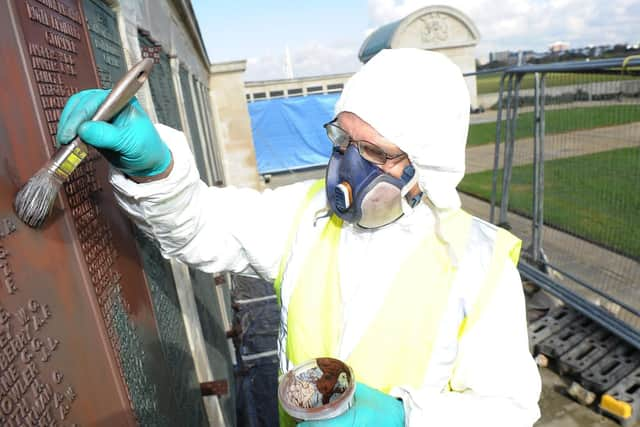

Frank is just one of 25,000 young men commemorated by the memorial.
‘Behind every name is a story and a family loss,’ said Max. ‘A number of names are decorated with Distinguished Combat Medals and even the Victoria Cross. This memorial is so important for families as without a grave there is nowhere else to go to remember loved ones. It also stands as a reminder of the sacrifices made to enable the freedom we experience today.’
The work being carried out was witnessed by current-day naval staff, keen to honour the memory of their forefathers.
Advertisement
Hide AdAdvertisement
Hide AdNaval base executive officer, Commander Michael Dreelan, said: ‘I think the restoration is exceptionally important as the memorial stands as a reminder of the shift in bringing about an end to the Second World War. Being here today is a bitter sweet experience – on one hand it signifies the victory we achieved but it is also a sad reminder of those personnel lost with no known grave.’
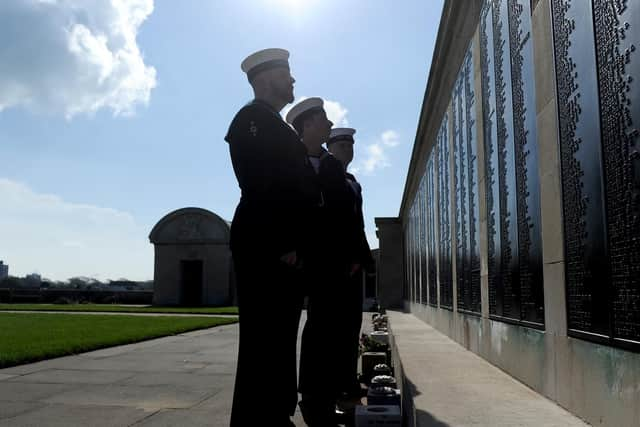

For Commander Dreelan, the memorial visit was also a poignant reminder of his own family’s loss in combat.
‘This memorial reminds me of Thiepval Memorial in France which I have visited to pay my respects to my great uncle, Corporal Edward Dreelan, who died in the Battle of the Somme,’ he said.
Restoration work is due to be completed in the next 10 weeks in time for the start of D-Day commemorations on June 5. A team of skilled workers have been charged with the task of restoring the name panels to their original state.
Advertisement
Hide AdAdvertisement
Hide AdStonemason Mike Witham, who has been working for the CWGC for 36 years, said: ‘After cleaning each panel we added two coats of wax. The bronze colouring comes from the addition of a memorial buff paint. We also use a fine toothbrush to remove any dust and debris from between the writing.’
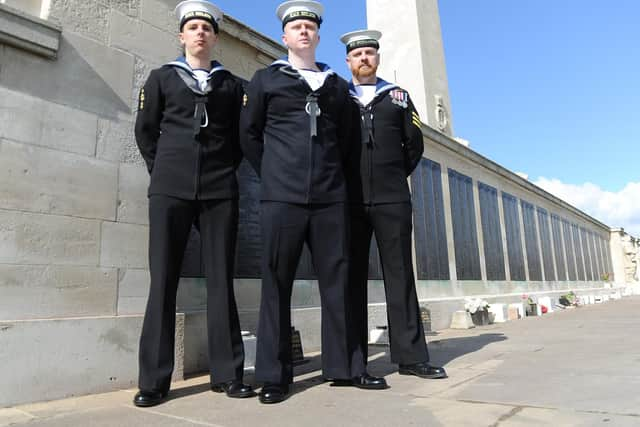

With over 90 panels to restore, the significance of the task is not lost on Mike.
‘It is important to look beyond the names and remember the significance of why they are here. We do read the names and think about what their lives may have been like. Many of the names are listed with medals in recognition of service. It is always a privilege to be asked to restore such memorials for those who gave their lives,’ he explained.
For the council’s D-Day 75 events co-ordinator, James Daly, the memorial restoration is the first stage in ensuring a fitting tribute to those who perished on that fateful day.
Advertisement
Hide AdAdvertisement
Hide Ad‘It must be several decades since the memorial has undergone restoration work. It is a once in a generation job and I certainly can’t remember it taking place in my lifetime. The memorial is an iconic part of the city’s landscape and it is only right we give it the care and attention it deserves. We want it in fantastic condition for the start of the D-Day commemorations,’ said James.
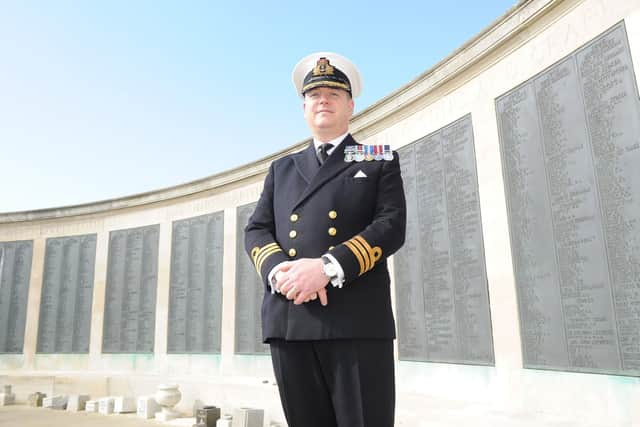

PORTSMOUTH NAVAL MEMORIAL
Proudly standing on Southsea Common, Portsmouth Naval Memorial casts a shadow out to sea – acting as a poignant reminder as to the final resting place of many of the city’s servicemen.
First unveiled on October 15, 1924, by Prince Albert, the memorial was initially constructed to commemorate the 10,000 naval personnel of the First World War who were lost or buried at sea.
On April 29, 1953, Queen Elizabeth, the Queen Mother, led a ceremony to open the memorial’s extension to honour the additional 15,000 naval seamen lost during the Second World War.
Advertisement
Hide AdAdvertisement
Hide AdIn total, more than 45,000 men and women tragically lost their lives while serving with the Royal Navy during the First World War. After the Armistice, the naval authorities and the Commonwealth War Graves Commission were determined to find an appropriate way to commemorate naval personnel who had no grave.
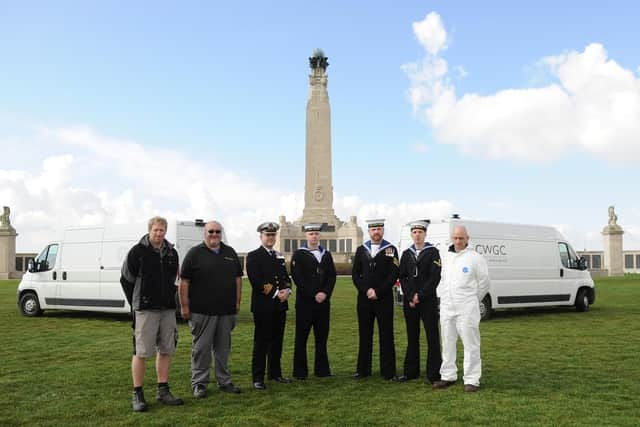

This led to the construction of Portsmouth Naval Memorial, one of three naval memorials in the UK.
Two further memorials of identical design were also constructed in the historical naval strongholds of Plymouth and Chatham.
All three memorials were designed by Scottish architect, Sir Robert Lorimer, and sculpted by architectural sculptor, Henry Poole. Each design has an obelisk of Portland stone surmounted by a copper sphere.